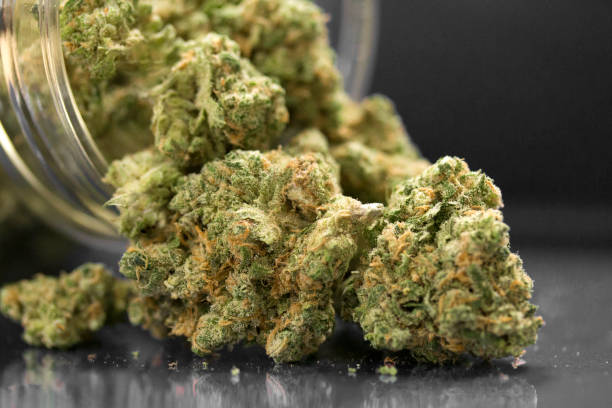
Medical marijuana is particularly used for treating health conditions that may involve sufficient benefits of medical marijuana, such as reducing anxiety, reducing nausea and vomiting, and most particularly treating migraines and seizures. On the other hand, it may involve different health risks such as addiction, damage to the lungs and vehicular accidents. Marijuana comes from a cannabis plant, which may contain different compounds like cannabinoids, cannabidiol and tetrahydrocannabinol, which are also named as psychoactive compounds. However, cannabis legalisation is increasingly common and also considered appropriate. This article will explore a advantages and disadvantages of taking Marijuana.
Some people use medical marijuana to treat conditions which include epilepsy and multiple sclerosis, and may also be effective for reducing anxiety symptoms, chronic pain, nausea and lack of appetite for people who are experiencing chemotherapy treatment for cancer.
Marijuana smokers often report that drugs like Marijuana can relax or relieve emotional stress. Another study found that a low dose of tetrahydrocannabinol can help reduce nerves for public speaking tasks. As per the research, marijuana could be helpful for people with anxiety with a limited dose.
Marijuana may relieve pain and help people to sleep through its high CBD levels. This condition is particularly applicable for those who cannot sleep due to chronic pain. It is also helpful in calming pain, stiffness and tight muscles in people. Moreover, people also use strains of medical marijuana with tetrahydrocannabinol to ease nausea and vomiting that happens due to chemotherapy.
As per the study, CBD oil helps in reducing seizures by 39% in children with a rare form of epilepsy. Moreover, the Food and Drug Administration approved CBD oil under the name Epidiolex, which does not make people high due to the absence of tetrahydrocannabinol. However, experts advise children and adolescents not to use tetrahydrocannabinol because of its side effects.
Marijuana helps people recover from opioid addiction as fewer doses of marijuana worked as a painkiller. Marijuana can be an effective pain treatment, critically reduces the chance of dependence, and eliminates the risk of fatal overdose in comparison to opioid-based medications. Medical cannabis patients report that cannabis is just as effective as opioid-based medications for pain.
The majority of the scientific research investigating whether cannabinoids can treat cancer has been conducted by conducting lab experiments on cancer cells grown in animals. The best results from lab studies states that using a combination of highly purified tetrahydrocannabinol and CBD. On the other hand, researchers have also found positive results by using man-made cannabinoids, which are named as a molecule called JWH-133.
As each individual may have unpleasant experiences with marijuana, such as euphoric and relaxing feelings. Some people may develop intense anxiety and panic after having their dose. The researchers also reported that women and men, and individuals of all ages, going to an emergency room due to the use of cannabis, have an elevated risk of developing new anxiety disorders relative to the general population, with men and younger adults aged 13-14 years at particularly elevated risk. That is why it required more research to figure out the appropriate dosages and delivery methods to prevent anxiety.
Experts advise against using strains of Marijuana with tetrahydrocannabinol while trying to get pregnant, during pregnancy, and while breastfeeding. Researchers are continuing to study the effects of using marijuana during pregnancy. Women who use marijuana may smoke cigarettes, drink alcohol or use other street drugs, which makes it harder to know how marijuana affects pregnancy. The problems may include fatal growth restriction, preterm birth, anencephaly and anaemia.
Frequent cannabis smoking may significantly increase a person’s risk for heart attack and stroke, according to an observational study supported by the National Institutes of Health, which stated that nearly 435,000 adults are experiencing an increased risk of heart attack. Moreover, analysis of survey data for 430,000 adults in the U.S also found that using cannabis has a significant association with an increased risk of heart attack and stroke, independent of tobacco use, with higher odds among the adults with more frequent use. The most common method of cannabis use was smoking, followed by eating or vaporising it. The most common type of cardiovascular disease are Arrhythmia ( an irregular heartbeat) and cardiac arrest (An event in which the heart suddenly stops working).
Strains of cannabis with THC can impair judgment, motor coordination, and reaction time.30 Cannabis is among the most frequent unlawful drugs in drivers' blood during vehicle crashes, including fatal ones. Moreover, tests might detect cannabis in bodily fluids for days to weeks after use. Some people might combine cannabis with alcohol, which also impairs driving.30
Research has found that vaping is more likely to cause lung damage than smoking cannabis with long-term use. The FDA has warned consumers to stop using THC vaping products following more than 1,000 reports of lung injuries. Some of these injuries resulted in deaths following the use of vaping products. This may include different conditions such as Asthma (A breathing disorder that causes the airways in the lungs to narrow and swell), Bronchitis (A type of chronic obstructive pulmonary disease).
However, smoking marijuana clearly damages the human lung, causing chronic bronchitis and marijuana smoke has been shown to injure the cell linings of the large airways, which could explain why smoking marijuana leads to symptoms such as chronic cough, phlegm production, wheeze, and acute bronchitis. In addition, cannabis contains tar and volatile chemicals that are present in tobacco smoke.34 Some evidence suggests that smoking cannabis poses a potential risk of lung cancer. The link between cannabis and lung cancer is not entirely clear.

This post has been authored and published by one of our premium contributors, who are experts in their fields. They bring high-quality, well-researched content that adds significant value to our platform.


